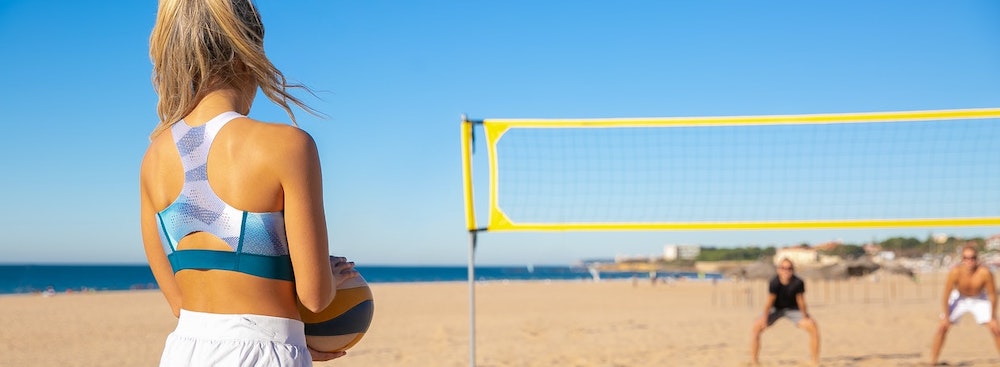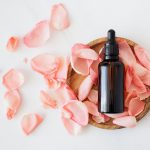How To Protect Your Skin From The Sun

Your skin is the largest organ in your body. It serves as a barrier to protect your internal organs from harm. Sun rays help your body produce vitamin D, but too much sun leads to painful burns. Additionally, being at the beach leaves a lot of people wondering, “is sea water good for your skin?” While the answer is yes, being out in the sun can have a negative impact. Too much sun exposure leads to early age spots, deep wrinkles, other blemishes, and if not protected, the sun can also cause dangerous skin cancers. It’s best to limit direct sun exposure if you want to prevent these problems.
Table of contents
- Tips for Protecting Your Skin from the Sun
- Why Is It Important to Protect Your Skin From the Sun?
- How to Protect Your Skin From the Sun
- Does Sunscreen Stop You From Tanning?
- How to Protect Your Skin From the Sun Without Sunscreen
- How Can I Protect My Face From the Sun?
- What Is the Safest Time to Be In the Sun?
- When Is the Sun the Strongest?
- How Long Does It Take for the Sun to Damage Your Skin?
- How Much Sun Is Safe per Day?
- Conclusion
Tips for Protecting Your Skin from the Sun
If you want to know how to protect your skin from the sun, it starts with knowing the times of day to avoid the sun. Sun rays are the most intense between 10 a.m. and 4 p.m. This period is the time of day when you could expect a bad sunburn and possibly some skin damage. Preventing sunburns requires applying sunscreen on exposed parts of your body and covering up what you can, including wearing a wide-brimmed hat to limit sunlight on your skin. For those with more sensitive skin and prone to burning more easily, it’s best to simply avoid direct sunlight during the most intense parts of the day.
Why Is It Important to Protect Your Skin From the Sun?
The most important reason to protect your skin from the sun is to prevent skin cancer. While some skin cancers can get removed easily, others go deep and can metastasize. Too much sun leads to skin damage that can become cancerous over time.
Different kinds of sunburns can be more harmful than others. They get caused by UV radiation that damages your skin cells and causes an inflammatory response. Constant sunburns may seem harmless, but over time can cause melanoma, basal cell carcinoma, or squamous cell carcinoma. More skin damage means more opportunities for cancer cells to grow.
- First-degree burns are the least harmful. You can expect your skin to be a little pink, dry, and sore. These heal in 6 days or less and only impact the top layer of your skin.
- Second-degree burns affect the top two layers of skin. You can expect a second-degree sunburn to last up to 3 weeks. You may experience small weeping blisters and skin color changes. A second-degree sunburn may or may not leave scarring.
- A third-degree sunburn will leave scarring if it doesn’t heal within three weeks. These burns go deeper, cause blisters, and show the importance of sunscreen. The deeper damage to cells can cause more harmful cancer cells to grow in deeper parts of the skin. These cancer cells become harder to remove.
- If you get a fourth-degree sunburn, you can expect to spend a lot of time in the hospital on medications and in surgery. These sunburns go all the way through the skin and can impact the fat and muscle as well. They cause the skin to change color to gray, black, or white.
How to Protect Your Skin From the Sun
When you’re planning your San Diego vacation, you’ll want to include sunscreen and clothing to help you protect your skin from the sun. Wear clothing that covers most of your body unless you are in the water. Clothing provides a physical barrier to protect you from UV radiation.
A good sun safety rule is to wait until 15 minutes after you apply sunscreen to go outside. This rule helps prevent sun damaged faces from exposed skin before the sunscreen is ready. A good sunscreen with at least SPF 30 will protect your face and any exposed limbs that you put it on. Your nose is an important spot to cover as well as your ears. Not only are they often forgotten, but they are also prone to skin cancers. When you’re in the water or outdoors for a long time, reapply sunscreen every hour.
To protect your eyes and face, put on a hat. For additional coverage on your face, a hat is essential. Skin cancer prevention experts recommend this for people who have had previous cancer cells removed from their face. A hat plus sunscreen provides almost 100% protection when you must be outside for a little while. You should also keep your face clean, hydrated, and healthy looking by using a high-quality collagen serum, which will help regulate your facial skin as well as help curb skin flair-ups.
Does Sunscreen Stop You From Tanning?
A lot of people want to know how to tan and not burn. There are two kinds of sunscreen. One uses chemicals that alter UV radiation, so it doesn’t harm your cells. The other uses something like zinc to block the sun from penetrating your skin. While a little tanning may occur if you use a low SPF, the best sun precautions should not cause you to burn.
How to Protect Your Skin From the Sun Without Sunscreen
If you don’t have any sunscreen, and you must be outdoors, cover your body, wear a hat, and stay inside between the hours of 10 a.m and 4 p.m. Some of the best beaches in La Jolla allow umbrellas and other sun shelters to help people stay out of the sun.
How Can I Protect My Face From the Sun?
Other than trying to prevent skin cancer, many people do not want to experience early signs of aging. A wide hat, a good sunscreen with at least SPF 15, and sunglasses provide the most comprehensive coverage to prevent sun damaged faces. Designer sunglasses for women can be worn for protection; just make sure they prevent 99%-100% of UVA and UVB rays.
What Is the Safest Time to Be In the Sun?
When you’re looking for how to prevent sunburn, it’s important to consider when you’ll be outside. It’s safest in the sun early morning before 10 a.m. and late afternoon starting at 4 p.m.
When Is the Sun the Strongest?
The sun is the most intense between 10 a.m. and 4 p.m. This timeframe is when most people should avoid sun exposure.
How Long Does It Take for the Sun to Damage Your Skin?
It depends on your skin type. Very fair-skinned people may experience sun damage in as little as 5 minutes, while those with very dark skin can spend 30 minutes in the sun without getting damaged.
How Much Sun Is Safe per Day?
Most people can get up to 15 minutes of sun per day to get the full benefits of being in the sun without any harm. More than that can lead to skin damage.
Conclusion
If you want to prevent age spots, sun damage, and skin cancer, the good news is that you can. You just need to learn how to protect your skin from the sun. With good sunscreen applied regularly, hats, sunglasses, and good sun habits, it’s easy to prevent sunburns and other sun damage that can lead to problems down the road. And finally, never underestimate the value of a good dermatologist.





